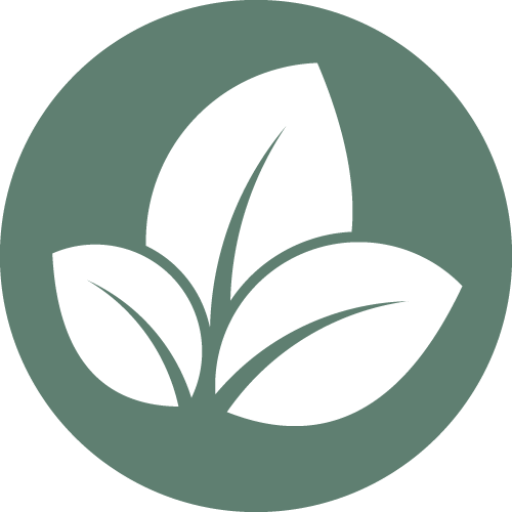(also known as Depperhaugh House and Depperhaugh Hall)
Parish: HOXNE
District Council: MID SUFFOLK
TM 208 760
A nursing home only open to the public on specific days
The Depperhaugh is a mid-nineteenth century country house in the hamlet of Chickering in Hoxne parish c. 8km (5mls) north-east of Eye and c. 4km (2.5mls) south-east of Hoxne. It lies on the clayland plateau of North Suffolk. Its parkland once stretched down to a tributary of the Waveney River to the south of the site. On the opposite side of the tributary river is an area that was once the oldest of two medieval deer parks in Hoxne, which belonged to the Bishops of Norwich. The house takes its name from Depperhaugh Wood, one of three ancient woodlands in the area.
In 1766 the site was a farmhouse owned by the Revd Thomas D’Eye, rector of Palgrave. It passed down the family and in 1801 was inherited by John Worth, Esq., a captain in the Royal Navy and his wife Catharine Sinclair who lived at Oakley House to the north-west of Hoxne village. The tithe apportionment of 1843 names John’s widow Catharine as the owner who leased the 82ha (204a) property to farmer John Hall. It passed to their daughter Mary Catharine Sinclair Worth who in 1856 married Capt. Baldwin Wake Walker, later becoming Admiral Sir Baldwin Walker. Although still leased to John Hall in 1861, Baldwin began making various exchanges of land, including Oakley House for Park Farm (Grade II) on the opposite side of the river and within the area of the old deer park. This established an estate worthy of the new house named The Depperhaugh that he built on the site of the farm where his family were to live at the end of the 1860s. It was set back from the road and surrounded by a small park with square walled garden to the east of the house.


After Sir Baldwin’s death in 1876 there followed a series of tenants, none of whom stayed for more than three years. The 1885 OS map shows the house with a raised terrace and formal gardens to the south and lawn dotted with shrubs and ponds surrounded by a belt of trees to the north. The main entrance drive was from the north-east with a path and gate to the north-west. The remains of the gate were still visible in 2022. Frederic William French, a tea merchant and later JP, lived at The Depperhaugh from 1903 until 1916. The Walker family tried to sell the property on a number of occasions during this period until the 341ha (844a) The Depperhaugh Estate was finally bought by John Gyford in 1919. The house and gardens were run as a private school from c. 1921 and the estate appears to have been broken-up leaving just 22ha (55a) of house, gardens, cottage and parkland for sale in 1935. A sales advertisement describes the white brick house with ‘undulating parkland studded with oak and other timbers’ with ‘delightful and inexpensive gardens and grounds, lawns, shrubberies, walled kitchen garden and orchard’. However, it was not until 1937 that it was sold to be run as an educational centre by Revd Thomas Thompson Evans.


In 1946 the estate was bought by Alfred Henry Mitchell who made it his family home until 1968 when it was acquired by Herman Simper, who sold the house and 2.8ha (7a) of gardens the following year when it became a care home with the parkland north-east and south of the house as separate lots. The rest of the estate was also available in lots, although it took until 1976 for all the land to be sold, at which time some of the parkland appears to have been added to the care home grounds.
Today the original parkland to the north is uncultivated and overgrown with a few surviving nineteenth century freestanding trees. To the south and west parkland has been lost to arable, although still dotted with parkland freestanding trees. The walled garden is now uncultivated, and some remains of the southern formal gardens survive in the form of a raised terrace and arbour fronted by a lawned area with lean-to glasshouse behind.
SOURCES:
Copinger, W. A., The Manors of Suffolk: The Hundreds of Carlford and Colneis, Cosford and Hartismere, Vol. 3, 1909.
Hoppitt, Rosemary, Deer Parks of Suffolk 1086–1602, 2020.
Kelly, E. R., Post Office Directory of Cambridgeshire, Norfolk & Suffolk, 1883, 1896.
Lodge, Edmund, The Peerage and Baronetage of the British Empire as at Present Existing, 1882.
Rimmer, Pauline, article at https://www.hoxnehistory.org.uk/The%Depperhaugh.php (accessed March 2022).
https://kingsleyhealthcare.co.uk/care-homes/the-depperhaugh-nursing-home/ (accessed March 2024).
https://www.edp24.co.uk/lifestyle/heritage/depperhaugh-nursing-homes-links-to-admiral-sir-baldwin-walker-1167862 (accessed March 2022).
Census: 1861, 1901.
1783 Hodskinson’s Map of Suffolk in 1783.
1842 (surveyed 1842) tithe map and apportionments.
1885 (surveyed 1884) OS map.
1905 (revised 1903) OS map.
1951 (revised 1947) OS map.
2024 Google aerial map (Imagery © Bluesky, CNES / Airbus, Getmapping plc, Infoterra Lts & Bluesky, Maxar Technologies, Map data © 2024).
Heritage Assets:
SHER: HXN 009, 010, 028, 029.
Park Farmhouse (Grade II), Historic England No. 1032501.
Suffolk Record Office (now Suffolk Archives):
SRO (Ipswich) HD2833/1/SC230/2. The Depperhaugh Estate, Hoxne, Sales particulars, 11 October 1968.
Site ownership: Private Care Home
Study written: March 2024
Type of Study: Desktop
Written by: Tina Ranft
Amended:
